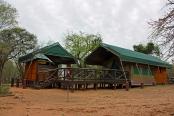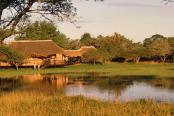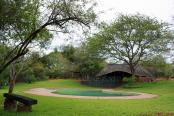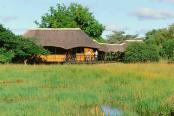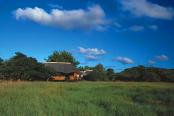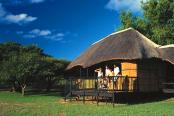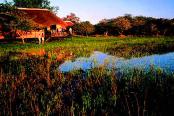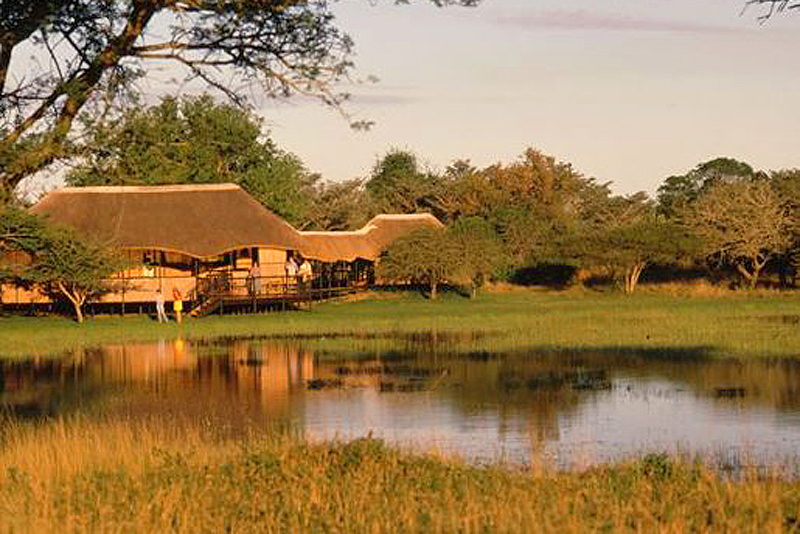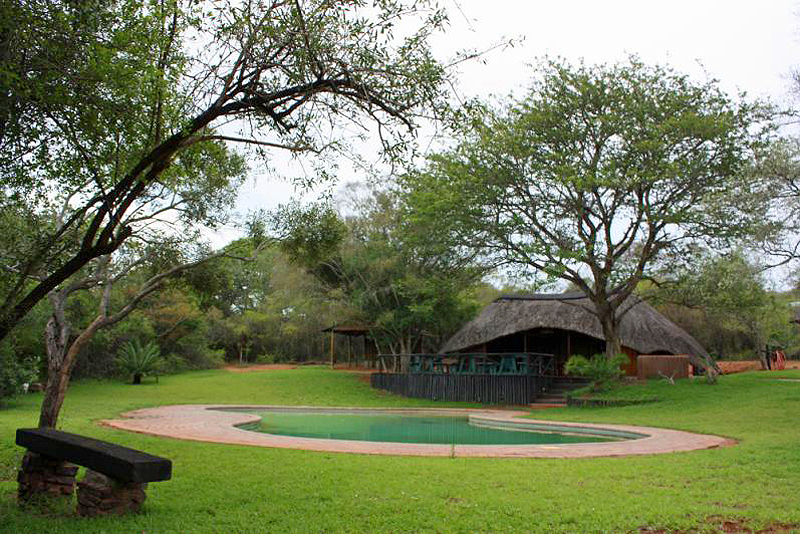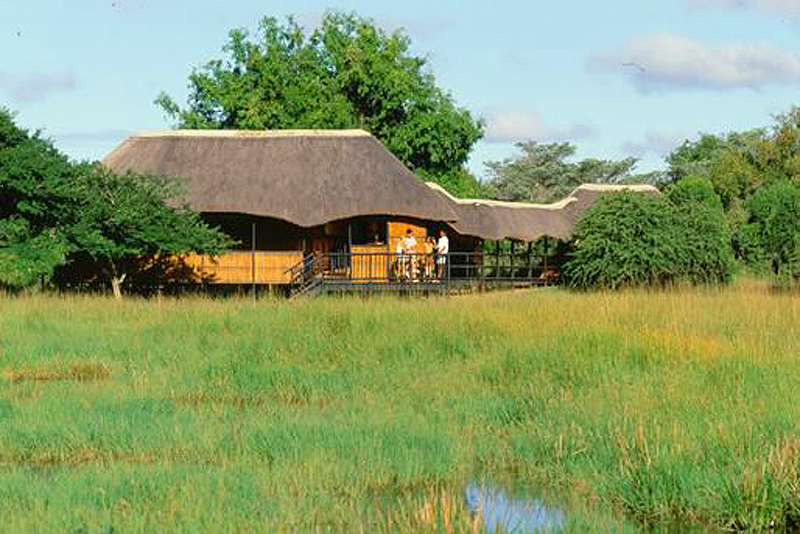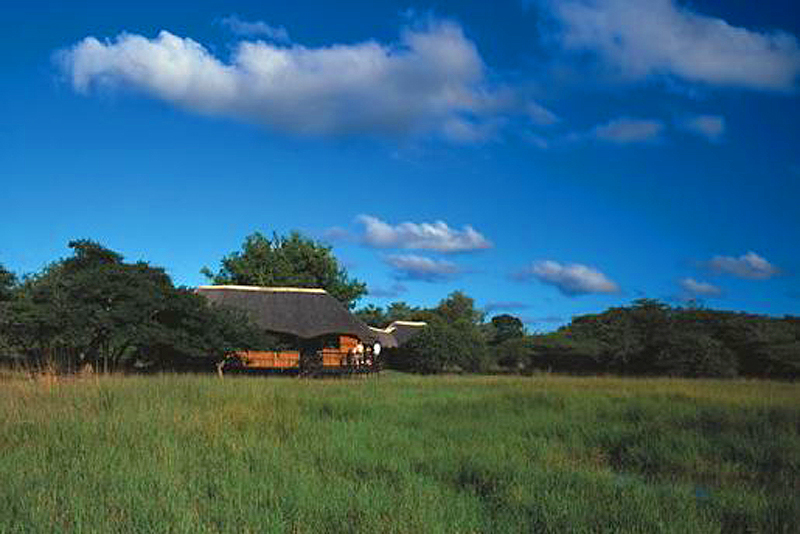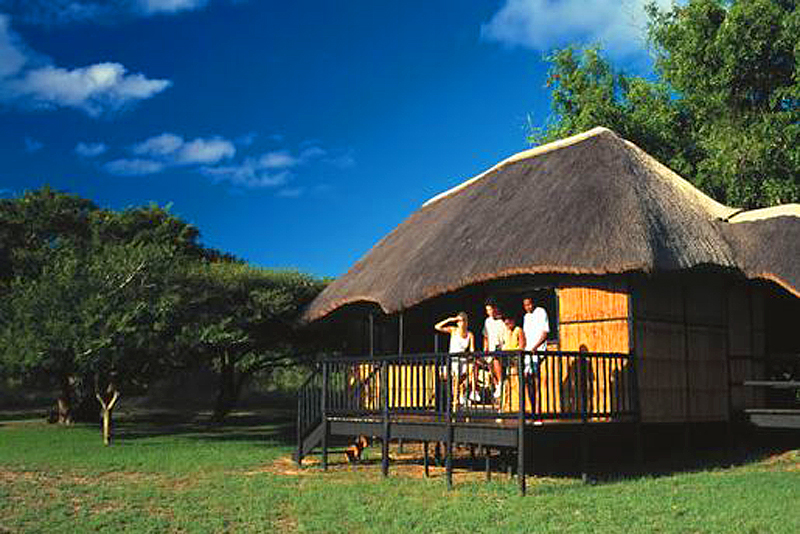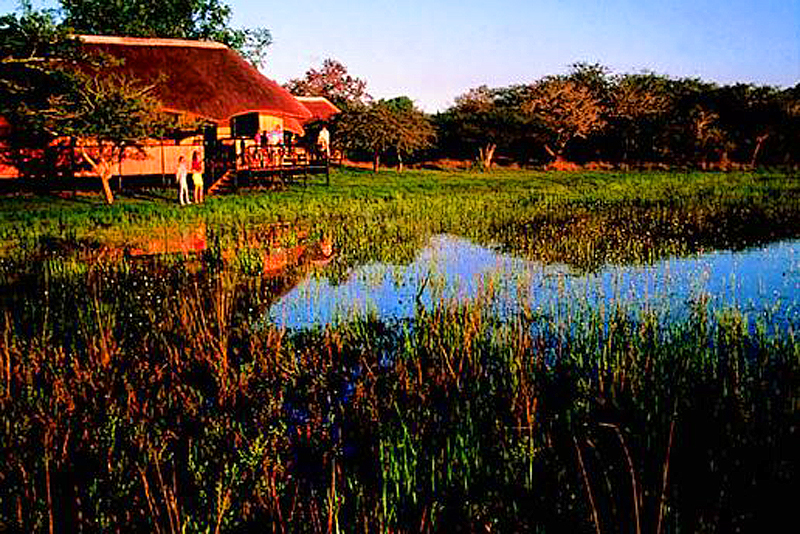uMkhuze Game Reserve
Vakansieoord Akkommodasie In St Lucia Wetlands
Mkhuze Game Reserve is situated in Northern Zululand, roughly 335 km from Durban. The reserve was established on 15 February 1912 and is 40 000 ha in extent. Today it forms part of the iSimangaliso Wetland Park.
What To Do On Arrival
Overnight visitors are requested to check in at the Reception office at Mantuma Camp. Visitors may take up their accommodation from 14:00 and check out time is 10:00. All visitors must pay an entrance fee at the gate.
General
No pets are permitted in the reserve. No firewood may be collected in the reserve. The water is chlorinated and filtered for human consumption but is very salty. Mineral/spring water is on sale at the camp curio shop and Rhino-Dine-O takeaway. Basic food stuffs and a variety of curio items are on sale at the curio shop. It is advisable to bring binoculars, a first aid kit, a torch, insect repellent, a hat and sun-tan lotion. Unleaded petrol and diesel are on sale at the Camp. Visitors are urged to take precautions against malaria before, during and after a visit to the reserve.
Mosquito nets are provided in each accommodation unit. Gate entry times: Summer (1 October - 31 March) 05:00 - 19:00, Winter (1 April - 30 September) 06:00 - 18:00. These times are strictly enforced. The accommodation complexes are either not fenced or do not have a totally game proof fence surrounding them. Please do not walk beyond the vicinity of your own chalet or campsite after sunset unless it is essential to do so. Office hours are from 08:00 - 16:30 daily. Sundays and Public Holidays are 08:00 - 16:00 daily.
The hides are being renovated at uMkhuze and will not be available for game viewing until further notice. We apologise for any inconvenience caused.
How To Get There
From the south, the turn-off to the Mkhuze Game Reserve is signposted 35 km north of Hluhluwe.
From this point, the road is gravel.
Approximately 15 km further turn right onto another signposted road through the Lebombo mountains.
The entrance is 10 km along this road and the route is clearly signposted.
Visitors from the north should take the road through Mkuze Village, which is 18 km from the entrance gate and 28 km from Mantuma camp.
This road is well signposted.
Accommodation
Two bed chalets:
Layout: 1 x bedroom,
a table with chairs,
couches and one bathroom with bathtub.
Facilities:
DSTV and a ceiling fan.
Pullout bed: available
Plug point: available
Four bed chalets:
Layout: 2 x bedroom, with four single beds.
A single bathroom ( bathtub),
lounge,
dinning room and a kitchen,
and a stove and a family fridge.
Facilities:
a DSTV,
a ceiling fan.
Plug points: Available
Two bed safari tents:
Layout: 1 x bedroom,
with a toilet and shower,
two plates stove with oven,
a family fridge
Facilities:
a portable fan.
Plug points: Available
Four bed safari tents:
Layout: 2 x bedroom,
with two single beds in each,
and a toilet and shower.
A family stove, a family fridge.
Facilities:
A portable fan.
Mosquito net
Plug point:Available
6 bed cottage:
Layout: 3 x bedrooms,
a dinning room,
a lounge,
two bathrooms (bathtub and shower) and a separate toilet,
and a family size kitchen.
Facilities:
a DSTV,
a ceiling fan,
a bar area,
a microwave and it is wheelchair friendly.
Plug points: Available
Rest Huts:
Layout:One room with two beds,
a bar fridge and a dining table.
Facilities:
a DSTV,
ceiling fan,
communal kitchen with microwave and utensils,
communal ablutions.
Plug points: Available
Visitor's Activities
A road network of 100 km traverses a variety of bushveld habitats which offer excellent game-viewing.
Animals include: wild dog, black and white rhino, elephant, giraffe, nyala, blue wildebeest, warthog, hippo, impala and kudu.
Rare species occurring are hyena, suni and leopard.
Four game viewing hides are situated next to the Kubube, Kumasinga, Kwamalibala and Kumahlala pans. The hides are being renovated at uMkhuze and will not be available for game viewing until further notice. We apologise for any inconvenience caused.
More than 420 species of birds have been recorded . Two bird-viewing hides have been erected next to the Nsumo Pan, where a wealth of waterfowl can be seen.
The Fig Forest Guided Walking Trail (guided by a field ranger) should not be missed. Short day walks (± 2 hours)conducted by a field ranger, may also be undertaken.
Night drives are also offered, giving visitors the opportunity to see some of the reserve’s nocturnal animals and birds.
A swimming pool is situated in the hutted camp and campsite respectively, strictly for accommodated guests only.
The Rhino Dine-O take-away situated near Mantuma is open from 07:00 - 09:30 for breakfast; 11:30 - 14:00 for lunch and 17:00 - 19:00 for dinner.
Attractions
Mkhuze is a place of great beauty and high contrasts and is renowned as a mecca for bird watchers with a bird list well in excess of four hundred. Predominantly flat and dry, with sandy ridges which are ancient dunes, it harbours an astonishing diversity of natural habitats. These range from the eastern slopes of the Lebombo mountains which lie along its western boundry, to broad stretches of gently rolling acacia savannah, swamps and a variety of woodlands and riverine forest.
The low lying hollows adjacent to the red sand dunes contain attractive groves of scented thorn which grow in clay soils. There is a substantial and rare sand forest found in the heart of the reserve, a habitat noted for its dark-leafed, wide spreading sherbert tree, and the red heart tree, which create a lovely sight in autumn with their pink winged seeds.
This diversity of habitats means a wide variety of animal species including black and white rhinoceros, elephant, giraffe, nyala, blue wildebeest, warthog, eland, hippo, impala, kudu and other smaller antelope. Rare species occurring in the reserve are cheetah, hyaena, suni and leopard. Three game viewing hides have been constructed next to the Kubube, Kamasinga, Kwamalibala pans. The hides are being renovated at uMkhuze and will not be available for game viewing until further notice.
Visitors park their cars and enter the hides on foot. Depending on the surface water in the reserve, but normally during the drier winter months,large concentrations of game may be seen at the waterholes. Visitors are therefore offered excellent views of most of the reserve’s larger mammals. These hides offer unique opportunities to photographers and many famous wildlife pictures have been taken there.
uMkhuze Game Reserve verskyn in die volgende afdelings:

Wag u op 'n spesiale ooreenkoms?
Spesiale aanbiedings! Ontvang vroeë kennisgewingsKlik op die blou knoppie op die bladsy van 'n eiendom en ontvang kennisgewings sodra hulle 'n spesiale transaksie plaas!

